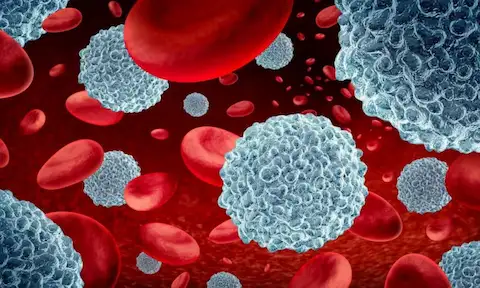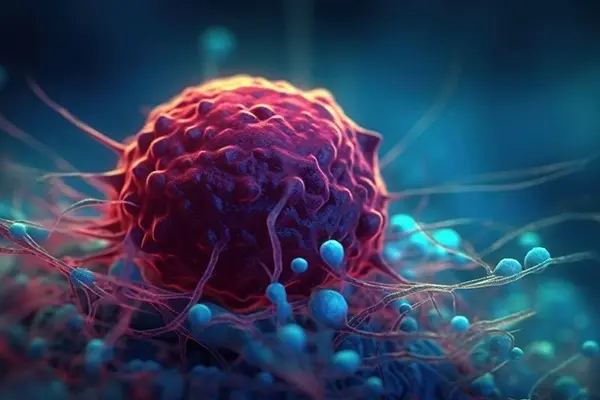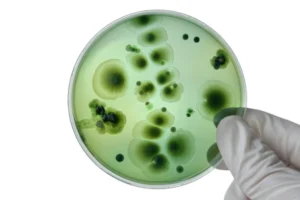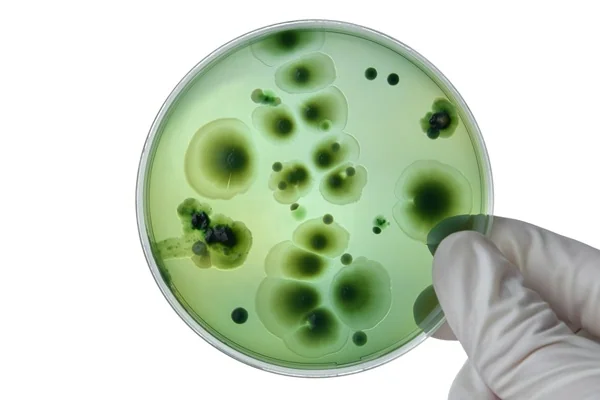Cancer research is always searching for new ways to fight back against disease, and one area that has drawn strong interest is anti cancer peptides. These are short chains of amino acids being studied for their unique ability to interact with cancer cells. Early findings suggest that certain peptides may disrupt cancer cell membranes or trigger processes that weaken harmful cells.
This has made them a fascinating subject for researchers looking at new approaches to cancer biology. From well-studied examples like PNC-27 to promising options such as LL-37, anti cancer peptides are becoming an important topic in scientific exploration.
In this article, we’ll discuss what anti cancer peptides are, take a closer look at PNC-27 and LL-37, and see how research on these peptides connects to the broader study of cancer biology. To understand their value, it helps to look more closely at how these peptides actually work inside cancer cells.
Explore PNC-27 from Peptide Works, an anti cancer peptide studied for its precision in targeting cancer cells while sparing healthy tissue.
What Is the Mechanism of Action of Anti Cancer Peptides?

Anticancer peptides work through several distinct research pathways. Many show a strong attraction to cancer cell membranes because of differences in surface charge. Once attached, they can insert into the membrane and form pores, which weakens the cell and often leads to its death.
Other peptides act inside the cell, where they may disturb mitochondria or trigger natural processes such as apoptosis, the programmed death of damaged cells. Some anti cancer peptides are also studied for their ability to block tumor blood vessel growth or slow cell division, affecting lipid bilayers and generating reactive oxygen species that damage cellular structures.
Together, these different actions make anti cancer peptides a versatile focus in cancer research and help explain why interest in peptides like PNC-27 and LL-37 continues to grow. Among these, PNC-27 has drawn special attention for its distinct way of interacting with cancer cells.
Discover LL-37 from Peptide Works, a natural immune peptide researched for its role in immune modulation and potential anticancer activity.
PNC-27: Exploring Its Role in Anti Cancer Peptides

PNC-27 is one of the most discussed anticancer peptides because of how it targets cancer cells with high selectivity. Recent studies show that this peptide binds to a protein called HDM-2 on the surface of cancer cells. Once attached, it can form small pores in the membrane, weakening the cell structure and leading to rapid necrosis. This pore-forming action is seen as a unique way anticancer peptides may act without harming normal, healthy cells.
Recent findings also point to PNC-27’s ability to disrupt mitochondria inside cancer cells. By damaging these vital energy centers, the peptide may add another layer of activity, making it a key example of how anticancer peptides show diverse and powerful modes of action across different cancer cell lines and cell line studies.
This selectivity is central to why PNC-27 has become so important, raising the question of why it targets cancer cells while sparing normal ones.
Why Is PNC-27 Selective for Cancer Cells?
PNC-27 shows selectivity because it binds to HDM-2 proteins that appear on the surface of cancer cell membranes but not on healthy cells. Once attached, it creates pores that disrupt the membrane, causing the cancer cell to die while leaving normal tissue unharmed. This makes PNC-27 a key example of how anticancer peptides can act with high precision.
Selectivity, however, is not always based on membrane binding. LL-37, another peptide often studied, works differently. It is a natural immune peptide that may influence cancer cells through immune signaling and inflammation control. This contrast highlights that while PNC-27 attacks cancer cells directly, LL-37 may affect them indirectly through the body’s own defense systems.
To understand the broader value of LL-37, it helps to look at how it differs from PNC-27 in both origin and function.

What Makes LL-37 Different from PNC-27?
LL-37 takes a very different approach compared to PNC-27. Instead of relying on direct pore creation in cell membranes, LL-37 acts mainly through immune signaling and regulation. It can slow cancer cell growth by triggering pathways such as BMP and p21, leading to cell cycle arrest. In some studies, LL-37 also reduced tumor activity by shaping the body’s defense response and supporting natural killer and T cells.
LL-37 is also linked to pathways involving growth factor activity, such as epidermal growth factor (EGF) and the epidermal growth factor receptor (EGFR), which may influence the tumor environment.
This indirect style contrasts with PNC-27’s membrane-focused action, showing how anticancer peptides can work along separate biological routes. The table below highlights the key differences:
| Feature | PNC-27 | LL-37 |
|---|---|---|
| Origin | Synthetic peptide | Natural human cathelicidin peptide |
| Mode of Action | Direct membrane disruption | Immune modulation and signaling |
| Cell Effect | Rapid breakdown of cancer cell structure | Cell cycle arrest, immune activation |
| Research Focus | Precision membrane targeting | Tumor microenvironment and defense support |
These differences point to the wider range of ways anti cancer peptides may influence tumors.
How Do Anti Cancer Peptides Target Tumors in Different Ways?
Anti cancer peptides can work in several ways beyond direct pore formation. Some act as tumor-homing peptides, binding to receptors that appear more often on cancer cells than on healthy ones. This allows them to guide treatments or mark tumor sites with high precision. Others take aim at tumor blood vessels. By blocking angiogenesis, these peptides cut off the nutrients and oxygen tumors need to grow, which may slow or even stop cancer progression.
There are also cell-penetrating peptides (CPPs) that carry drugs or imaging tools directly inside cancer cells. By combining targeting with delivery, anti cancer peptides expand the options for tackling tumors in ways that standard treatments alone often cannot achieve.
These abilities have sparked interest in whether peptides could also help overcome one of the greatest hurdles in treatment: resistance to existing drugs.
Can Anti Cancer Peptides Overcome Drug Resistance?
Anticancer peptides are being studied for their ability to bypass drug resistance in cancer. Many resistant cells block chemotherapy drugs, but some peptides can avoid these defenses. Membrane-active peptides create openings in cancer cells, allowing treatments to reach their target even when standard drugs fail. This makes them a useful tool when tumors no longer respond to traditional therapy.
Other approaches use peptide–drug conjugates, where the peptide carries chemotherapy agents directly into resistant tumors. Research suggests that peptide like PNC-27 may re-sensitize stubborn cancer cells, while peptides such as LL-37 could support immune pathways that add to treatment effects.
Together, they highlight how anticancer peptides may provide hope against resistant cancers. Because of this potential, many researchers now see anticancer peptides as an important part of the future of cancer therapy.
The Future of Anti Cancer Peptides
Anticancer peptides are opening doors to new possibilities in cancer studies. Molecules such as PNC-27 and LL-37 show how small peptides can act in very different ways, from breaking cancer cell membranes to guiding immune defenses. This flexibility gives scientists hope for approaches that could one day overcome the limits of current treatments, including drug resistance.
Several clinical trials are underway exploring their safety, efficacy, and potential side effects or adverse effects. Their influence on cancer stem cells and interaction with growth factor signaling networks demonstrate their long-term promise in shaping advanced therapeutic strategies.
At Peptide Works, we are proud to support research worldwide by providing trusted peptides for laboratory use, helping move the science forward toward a future where peptide-based tools may play a larger role in cancer care.
All products discussed are supplied for research purposes only and are not intended for human use.
References
[1] Xie M, Liu D, Yang Y. Anti-cancer peptides: classification, mechanism of action, reconstruction and modification. Open Biol. 2020 Jul;10(7):200004.
[2] Ghaly G, Tallima H, Dabbish E, Badr ElDin N, et al. Anti-Cancer Peptides: Status and Future Prospects. Molecules. 2023 Jan 23;28(3):1148.
[3] Krzesaj P, Adler V, Feinman RD, Miller A, et al. Anti-Cancer Peptide PNC-27 Kills Cancer Cells by Unique Interactions with Plasma Membrane-Bound hdm-2 and with Mitochondrial Membranes Causing Mitochondrial Disruption. Ann Clin Lab Sci. 2024 Mar;54(2):137-148.
[4] Lu F, Zhu Y, Zhang G, Liu Z. Renovation as innovation: Repurposing human antibacterial peptide LL-37 for cancer therapy. Front Pharmacol. 2022 Aug 23;13:944147.









